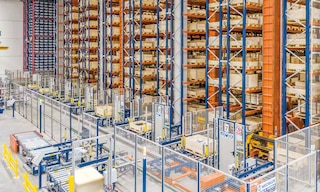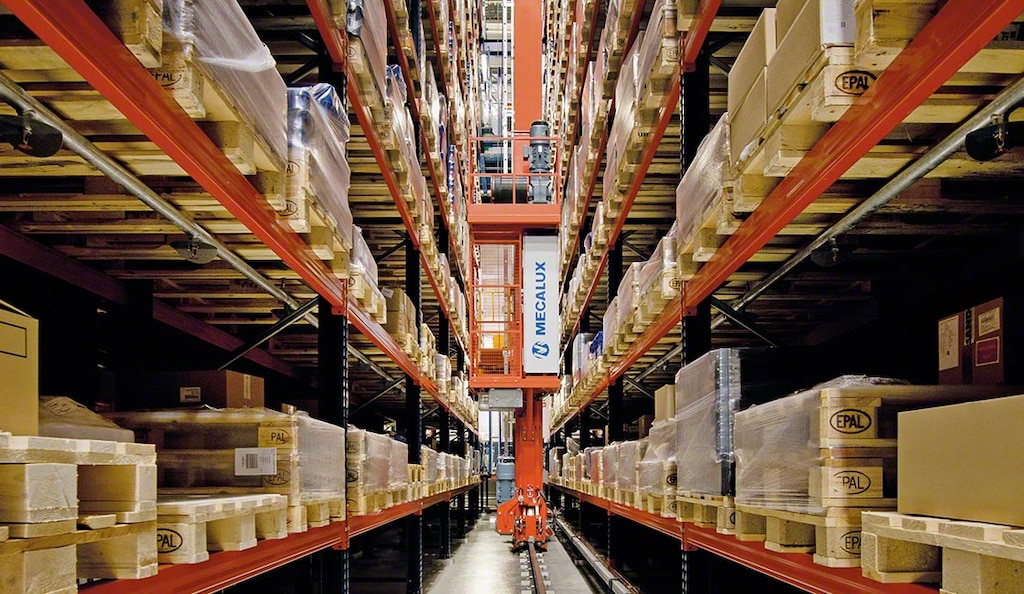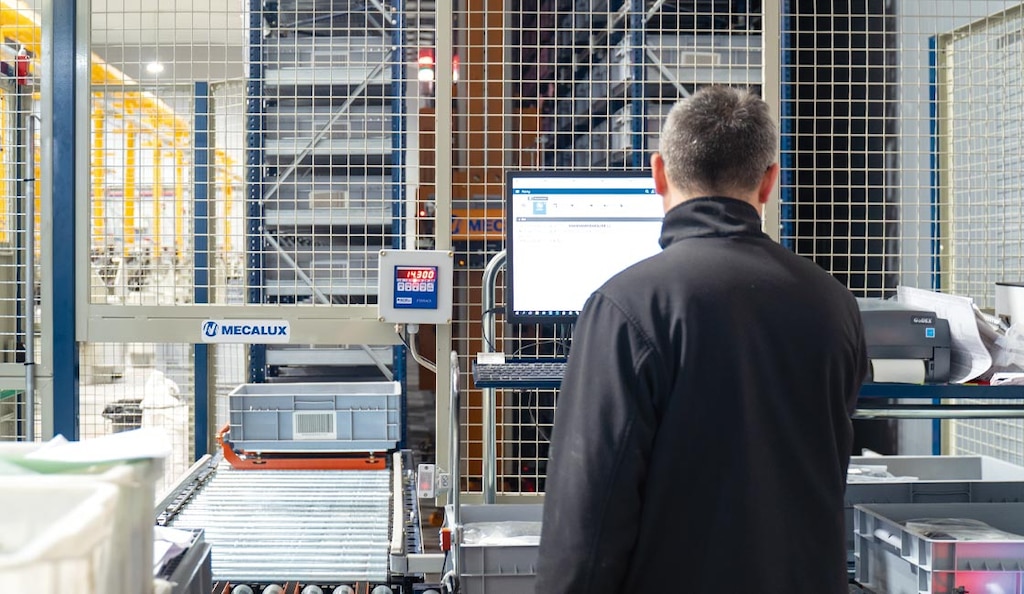
Programmable logic controller (PLC) in logistics: the first step to automation
The proliferation of programmable logic controllers (PLC) in logistics has gone hand in hand with the automation of warehouses and production centers. These rugged processors are charged with running automation programs in logistics and industrial environments.
In other words, they’re devices responsible for processing instructions and executing the movements programmed so that the automated system works properly.
What’s a programmable logic controller (PLC)?
A programmable logic controller or PLC is the cornerstone of industrial process automation. Many automated warehouse systems have a PLC to facilitate automation of their movements. It’s important not to confuse PLCs in logistics with PLC in a robotics context, which stands for power line communications (technology that enables the exchange of data over high-voltage power lines).
In logistics, PLCs work as follows: the processor communicates with a higher-level software, which processes the information it receives from the warehouse management system (WMS) and executes tasks based on preprogrammed rules. These types of microprocessors, generally more robust than PCs, operate in real time: they receive information via the input channels and execute the machine movements via the output channels.
PLC components
PLCs have a basic structure similar to that of a computer. It is made up of:
- CPU: central processing unit that interprets each of the programmed instructions.
- Power supply unit: component that supplies electrical energy to the CPU and the other PLC elements.
- Memory unit: available space on the processor for storing all the information necessary to carry out the control task.
- Inputs and outputs: analog and digital modules that guarantee the successful execution of the PLC. The inputs process the information from the superior software program, while outputs enable the physical connection between the computer and the robot making the movements.
- Programming unit: set of hardware and software that enables the PLC to interpret in one programing language or another the instructions received from another program.
Incidentally, many of these automatons are programmed with languages such as Ladder, which is based on contact diagrams and classic control schemes. In recent years, IEC languages have been incorporated to facilitate the use of the same program in PLCs of different manufacturers.

Differences between PCs and PLCs
Programmable logic controllers are often confused with the various control computers found at any warehouse workstation, since both can govern the movements of an industrial robot via the information received from a superior software program. Additionally, the hardware structures of both are similar: they have a CPU, a set of input signals, output signals, and a memory unit.
Nevertheless, programmable logic controllers do not have an operating system, which means they can’t use databases. On the other hand, a PC runs on an operating system (OS), where software such as Galileo (used by Interlake Mecalux in its facilities) is installed. This software collects information on the status of the automated warehouse systems and receives instructions to activate their movements.
In any event, a PLC has numerous advantages over a computer prepared for industrial activity: it offers the possibility to incorporate security programs with safer inputs and outputs, ideal for processes with no margin for error.
Moreover, programmable logic controllers are a perfect tool for the logistics and production sectors, as they’ve been ruggedized; that is, they’re specially designed to operate in harsh environments, with protections from high-frequency vibrations, corrosion, temperature changes, and so on.
Interlake Mecalux uses a combination of PCs and PLCs in its facilities, leveraging the benefits of each of these types of devices.
PLC functions and applications in warehouses
Programmable logic controllers serve as the first step towards automation in a warehouse. Nowadays, they’re found anywhere an automated system is implemented. These rugged processors operate similarly to a desktop computer, but it is particularly adapted to operate in industrial environments. That is, the operating systems of PCs are less stable than those of PLCs, and computers aren’t specifically designed to resist industrial or warehouse working conditions.
PLCs are typically installed in industrial processes that require little space, process control, or that use multiple sequences to carry out different tasks. Due to their high strength, they’re an optimal tool for executing automated movements in logistics facilities: from pick and place robots at automotive industry pick stations to automated storage and retrieval systems (AS/RS) in the chemical and pharmaceutical sectors. In fact, many automated storage and transportation solutions, such as miniload systems (AS/RS for boxes) and roller conveyors for boxes, totes, and bins, are controlled by PLCs.

Relationship between the PLC, WCS and WMS
A PLC consists of hardware used to store a specialized program to interpret the information received from a superior software program and execute the movements of the automated machines.
Meanwhile, a warehouse control system (WCS) is the higher-level software that sends data to the PLC or industrial PC to drive the machinery. This software governs the elements that control goods outflows and the management of locations. It governs the movements of any automated element: from stacker cranes for pallets to the picking conveyors.
However, there’s a third logistics program that acts as the brain of the warehouse, indicating to the WCS the instructions it needs to send to the PLCs according to slotting criteria, picking strategies, and parameterizable dispatch routes, among many other variables. This software is the warehouse management system (WMS).
PLCs, pillars of industrial automation
Whether via a PLC or a PC with integrated software, coordination between the different automated systems is key for an efficient, productive warehouse. Furthermore, industrial automation is steadily gaining ground in logistics centers: according to the latest study from consulting firm LogisticsIQ, the turnover for this sector is expected to exceed $30 billion by 2026.
Against this backdrop, for your automated warehouse to run smoothly, it’s best to invest in software that ensures synchronization between all the automated systems, fostering safety, productivity, and, above all, efficiency.
At Interlake Mecalux, our team of professionals specializes in the design and implementation of automated systems adapted to your products, facility, and needs. Don’t hesitate to contact us. One of our expert consultants will advise you on the best solution to increase your logistics throughput.
